- Home
- Stephen Hawking
The Dreams That Stuff is Made of Page 2
The Dreams That Stuff is Made of Read online
Page 2
Consequently, the entire problem is reduced to determining S as a function of U, and it is to this task that the most essential part of the following analysis is devoted. In my first treatment of this subject I had expressed S, by definition, as a simple function of U without further foundation, and I was satisfied to show that this from of entropy meets all the requirements imposed on it by thermodynamics. At that time I believed that this was the only possible expression and that consequently Wein’s law, which follows from it, necessarily had general validity. In a later, closer analysis,f however, it appeared to me that there must be other expressions which yield the same result, and that in any case one needs another condition in order to be able to calculate S uniquely. I believed I had found such a condition in the principle, which at the time seemed to me perfectly plausible, that in an infinitely small irreversible change in a system, near thermal equilibrium, of N identical resonators in the same stationary radiation field, the increase in the total entropy SN = NS with which it is associated depends only on its total energy UN = NU and the changes in this quantity, but not on the energy U of individual resonators. This theorem leads again to Wien’s energy distribution law. But since the latter is not confirmed by experience one is forced to conclude that even this principle cannot be generally valid and thus must be eliminated from the theory.g
Thus another condition must now be introduced which will allow the calculation of S, and to accomplish this it is necessary to look more deeply into the meaning of the concept of entropy. Consideration of the untenability of the hypothesis made formerly will help to orient our thoughts in the direction indicated by the above discussion. In the following a method will be described which yields a new, simpler expression for entropy and thus provides also a new radiation equation which does not seem to conflict with any facts so far determined.
I. CALCULATIONS OF THE ENTROPY OF A RESONATOR AS A FUNCTION OF ITS ENERGY
§ 1. Entropy depends on disorder and this disorder, according to the electromagnetic theory of radiation for the monochromatic vibrations of a resonator when situated in a permanent stationary radiation field, depends on the irregularity with which it constantly changes its amplitude and phase, provided one considers time intervals large compared to the time of one vibration but small compared to the duration of a measurement. If amplitude and phase both remained absolutely constant, which means completely homogeneous vibrations, no entropy could exist and the vibrational energy would have to be completely free to be converted into work. The constant energy U of a single stationary vibrating resonator accordingly is to be taken as time average, or what is the same thing, as a simultaneous average of the energies of a large number N of identical resonators, situated in the same stationary radiation field, and which are sufficiently separated so as not to influence each other directly. It is in this sense that we shall refer to the average energy U of a single resonator. Then to the total energy
(1)
of such a system of N resonators there corresponds a certain total entropy
(2)
of the same system, where S represents the average entropy of a single resonator and the entropy SN depends on the disorder with which the total energy UN is distributed among the individual resonators.
§ 2. We now set the entropy SN of the system proportional to the logarithm of its probability W, within an arbitrary additive constant, so that the N resonators together have the energy EN:
(3)
In my opinion this actually serves as a definition of the probability W, since in the basic assumptions of electromagnetic theory there is no definite evidence for such a probability. The suitability of this expression is evident from the outset, in view of its simplicity and close connection with a theorem from kinetic gas theory.h
§ 3. It is now a matter of finding the probability W so that the N resonators together possess the vibrational energy UN. Moreover, it is necessary to interpret UN not as a continuous, infinitely divisible quantity, but as a discrete quantity composed of an integral number of finite equal parts. Let us call each such part the energy element ε; consequently we must set
(4)
where P represents a large integer generally, while the value of ∈ is yet uncertain.
The above paragraph in the original German
Now it is evident that any distribution of the P energy elements among the N resonators can result only in a finite, integral, definite number. Every such form of distribution we call, after an expression used by L. Boltzmann for a similar idea, a “complex.” If one denotes the resonators by the numbers 1, 2, 3, . . .N, and writes these side by side, and if one sets under each resonator the number of energy elements assigned to it by some arbitrary distribution, then one obtains for every complex a pattern of the following form:
Here we assume N = 10, P = 100. The number R of all possible complexes is obviously equal to the number of arrangements that one can obtain in this fashion for the lower row, for a given N and P. For the sake of clarity we should note that two complexes must be considered different if the corresponding number patters contain the same numbers but in a different order.
From combination theory one obtains the number of all possible complexes as:
Now according to Stirling’s theorem, we have in the first approximation:N! = NN
Consequently, the corresponding approximation is:
§ 4. The hypothesis which we want to establish as the basis for further calculation proceeds as follows: in order for the N resonators to possess collectively the vibrational energy UN, the probability W must be proportional to the number R of all possible complexes formed by distribution of the energy UN among the N resonators; or in other words, any given complex is just as probable as any other. Whether this actually occurs in nature one can, in the last analysis, prove only by experience. But should experience finally decide in its favor it will be possible to draw further conclusions from the validity of this hypothesis about the particular nature of resonator vibrations; namely in the interpretation put forth by J. V. Kriesi regarding the character of the “original amplitudes, comparable in magnitude but independent of each other.” As the matter now stands, further development along these lines would appear to be premature.
§ 5. According to the hypothesis introduced in connection with equation (3), the entropy of the system of resonators under consideration is, after suitable determination of the additive constant:
(5)
and by considering (4) and (1):
Thus, according to equation (2) the entropy S of a resonator as a function of its energy U is given by:
(6)
II. INTRODUCTION OF WIEN’S DISPLACEMENT LAW
§ 6. Next to Kirchoff’s theorem of the proportionality of emissive and absorptive power, the so-called displacement law, discovered by and named after W. Wien,j which includes as a special case the Stefan-Boltzmann law of dependence of total radiation on temperature, provides the most valuable contribution to the firmly established foundation of the theory of heat radiation, In the form given by M. Thiesenk it reads as follows:
where λ is the wavelength, E dλ represents the volume density of the “black-body” radiationl within the spectral region λ to λ + dλ, θ represents temperature and ψ (x) represents a certain function of the argument x only.
§ 7. We now want to examine what Wien’s displacement law states about the dependence of the entropy S of our resonator on its energy U and its characteristic period, particularly in the general case where the resonator is situated in an arbitrary diathermic medium. For this purpose we next generalize Thiesen’s form of the law for the radiation in an arbitrary diathermic medium with the velocity of light c. Since we do not have to consider the total radiation, but only the monochromatic radiation, it becomes necessary in order to compare different diathermic media to introduce the frequency ν instead of the wavelength λ.
Thus, let us denote by u dν the volume density of the radiation energy belonging to the spectral region ν to ν
+ dν; then we write: u dν instead of E dλ; c/ν instead of λ, and cdν/ν2 instead of dλ. From which we obtain
Now according to the well-known Kirchoff-Clausius law, the energy emitted per unit time at the frequency ν and temperature θ from a black surface in a diathermic medium is inversely proportional to the square of the velocity of propagation c2; hence the energy density U is inversely proportional to c3 and we have:
where the constants associated with the function f are independent of c.
In place of this, if f represents a new function of a single argument, we can write:
(7)
and from this we see, among other things, that as is well known, the radiant energy u · λ3 at a given temperature and frequency is the same for all diathermic media.
§ 8. In order to go from the energy density u to the energy U of a stationary resonator situated in the radiation field and vibrating with the same frequency ν, we use the relation expressed in equation (34) of my paper on irreversible radiation processesm:
(K is the intensity of a monochromatic linearly, polarized ray), which together with the well-known equation:
yields the relation:
(8)
From this and from equation (7) follows:
where now c does not appear at all. In place of this we may also write:
§ 9. Finally, we introduce the entropy S of the resonator by setting
(9)
We then obtain:
and integrated:
(10)
that is, the entropy of a resonator vibrating in an arbitrary diathermic medium depends only on the variable U/ν, containing besides this only universal constants. This is the simplest form of Wien’s displacement law known to me.
§ 10. If we apply Wien’s displacement law in the latter form to equation (6) for the entropy S, we then find that the energy element ε must be proportional to the frequency ν, thus:ε = hν
and consequently:
here h and k are universal constants.
By substitution into equation (9) one obtains:
(11)
and from equation (8) there then follows the energy distribution law sought for:
(12)
or by introducing the substitutions given in § 7, in terms of wavelength λ instead of the frequency:
(13)
I plan to derive elsewhere the expressions for the intensity and entropy of radiation progressing in a diathermic medium, as well as the theorem for the increase of total entropy in nonstationary radiation processes.
III. NUMERICAL VALUES
§ 11. The values of both universal constants h and k may be calculated rather precisely with the aid of available measurements. F. Kurlbaumn, designating the total energy radiating into air from 1 sq cm of a black body at temperature t°C in 1 sec by St, found that:
From this one can obtain the energy density of the total radiation energy in air at the absolute temperature 1:
On the other hand, according to equation (12) the energy density of the total radiant energy for θ = 1 is:
and by termwise integration:
If we set this equal to 7.061 · 10−15, then, since c = 3 · 1010 cm/sec, we obtain:
(14)
§ 12. O. Lummer and E. Pringswimo determined the product λmθ, where λm is the wavelength of maximum energy in air at temperature 0, to be 2940 micron· degree. Thus, in absolute measure:λm = 0.294 cm · deg
On the other hand, it follows from equation (13), when one sets the derivative of E with respect to θ equal to zero, thereby finding λ = λm
and from this transcendental equation:λmθ = ch/4.9651k
consequently:h/k = (4.9561 · 0.294) /3 · 1010 = 4.866 · 10−11
From this and from equation (14) the values for the universal constants become:
(15)
(16)
These are the same number that I indicated in my earlier communication.
ON A HEURISTIC VIEWPOINT CONCERNING THE PRODUCTION AND TRANSFORMATION OF LIGHT
BY
ALBERT EINSTEIN
First presented in Bern, Switzerland, March 17, 1905.
A profound formal distinction exists between the theoretical concepts which physicists have formed regarding gases and other ponderable bodies and the Maxwellian theory of electromagnetic processes in so–called empty space. While we consider the state of a body to be completely determined by the positions and velocities of a very large, yet finite, number of atoms and electrons, we make use of continuous spatial functions to describe the electromagnetic state of a given volume, and a finite number of parameters cannot be regarded as sufficient for the complete determination of such a state. According to the Maxwellian theory, energy is to be considered a continuous spatial function in the case of all purely electromagnetic phenomena including light, while the energy of a ponderable object should, according to the present conceptions of physicists, be represented as a sum carried over the atoms and electrons. The energy of a ponderable body cannot be subdivided into arbitrarily many or arbitrarily small parts, while the energy of a beam of light from a point source (according to the Maxwellian theory of light or, more generally, according to any wave theory) is continuously spread an ever increasing volume.
The wave theory of light, which operates with continuous spatial functions, has worked well in the representation of purely optical phenomena and will probably never be replaced by another theory. It should be kept in mind, however, that the optical observations refer to time averages rather than instantaneous values. In spite of the complete experimental confirmation of the theory as applied to diffraction, reflection, refraction, dispersion, etc., it is still conceivable that the theory of light which operates with continuous spatial functions may lead to contradictions with experience when it is applied to the phenomena of emission and transformation of light.
Reprinted with permission from American Journal of Physics, 33, 367–374 (1965). © 1965, American Association of Physics Teachers.
It seems to me that the observations associated with blackbody radiation, fluorescence, the production of cathode rays by ultraviolet light, and other related phenomena connected with the emission or transformation of light are more readily understood if one assumes that the energy of light is discontinuously distributed in space. In accordance with the assumption to be considered here, the energy of a light ray spreading out from a point source is not continuously distributed over an increasing space but consists of a finite number of energy quanta which are localized at points in space, which move without dividing, and which can only be produced and absorbed as complete units.
In the following I wish to present the line of thought and the facts which have led me to this point of view, hoping that this approach may be useful to some investigators in their research.
1. CONCERNING A DIFFICULTY WITH REGARD TO THE THEORY OF BLACKBODY RADIATION
We start first with the point of view taken in the Maxwellian and the electron theories and consider the following case. In a space enclosed by completely reflecting walls, let there be a number of gas molecules and electrons which are free to move and which exert conservative forces on each other on close approach: i.e. they can collide with each other like molecules in the kinetic theory of gases.pFurthermore, let there be a number of electrons which are bound to widely separated points by forces proportional to their distances from these points. The bound electrons are also to participate in conservative interactions with the free molecules and electrons when the latter come very close. We call the bound electrons “oscillators”: they emit and absorb electromagnetic waves of definite periods.
According to the present view regarding the origin of light, the radiation in the space we are considering (radiation which is found for the case of dynamic equilibrium in accordance with the Maxwellian theory) must be identical with the blackbody radiation—at least if oscillators of all the relevant frequencies are considered to be present.
For the time being, we disregard the radiation emitted an
d absorbed by the oscillators and inquire into the condition of dynamical equilibrium associated with the interaction (or collision) of molecules and electrons. The kinetic theory of gases asserts that the average kinetic energy of an oscillator electron must be equal to the average kinetic energy of a translating gas molecule. If we separate the motion of an oscillator electron into three components at angles to each other, we find for the average energy of one of these linear components the expression

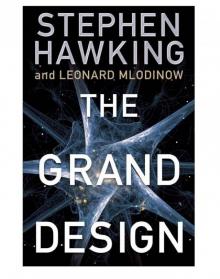 The Grand Design
The Grand Design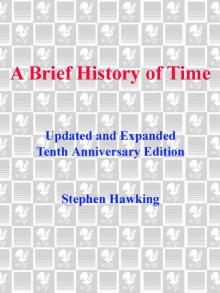 A Brief History of Time
A Brief History of Time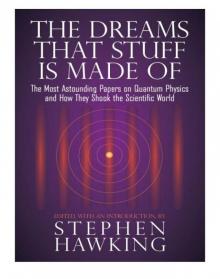 The Dreams That Stuff is Made of
The Dreams That Stuff is Made of My Brief History
My Brief History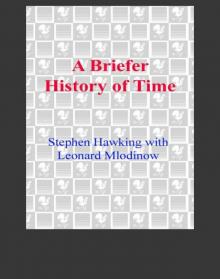 A Briefer History of Time
A Briefer History of Time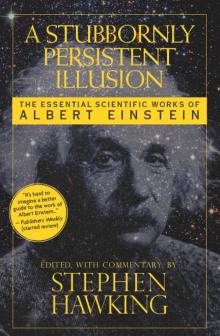 A Stubbornly Persistent Illusion
A Stubbornly Persistent Illusion George and the Blue Moon
George and the Blue Moon George and the Unbreakable Code
George and the Unbreakable Code Brief Answers to the Big Questions
Brief Answers to the Big Questions George's Secret Key to the Universe
George's Secret Key to the Universe